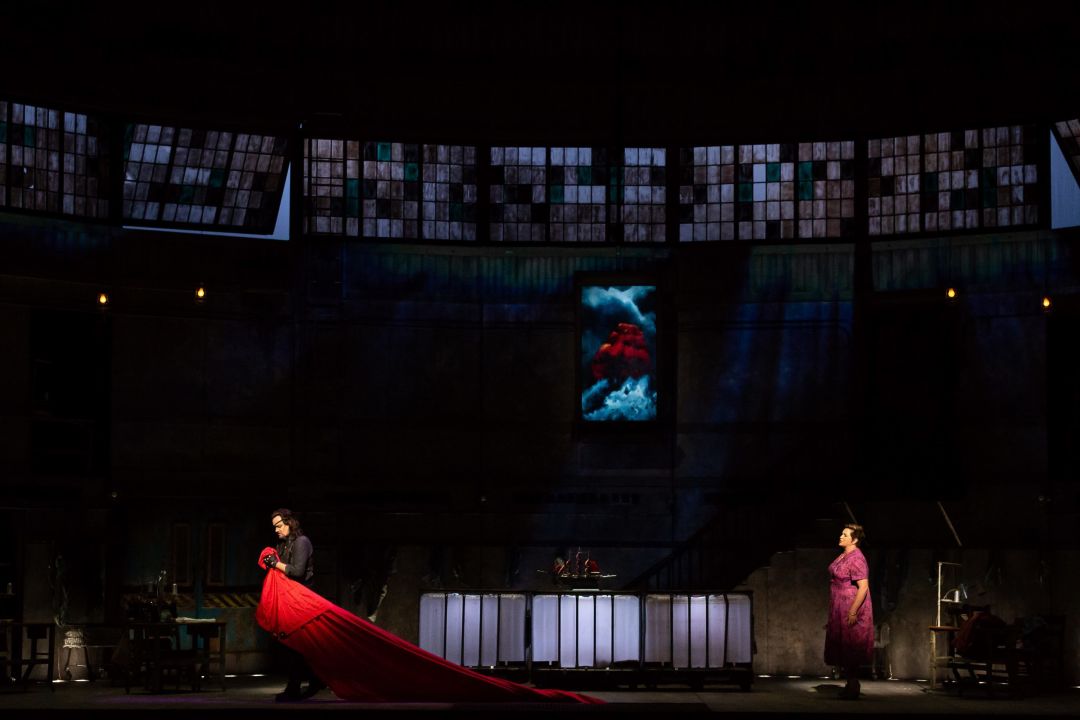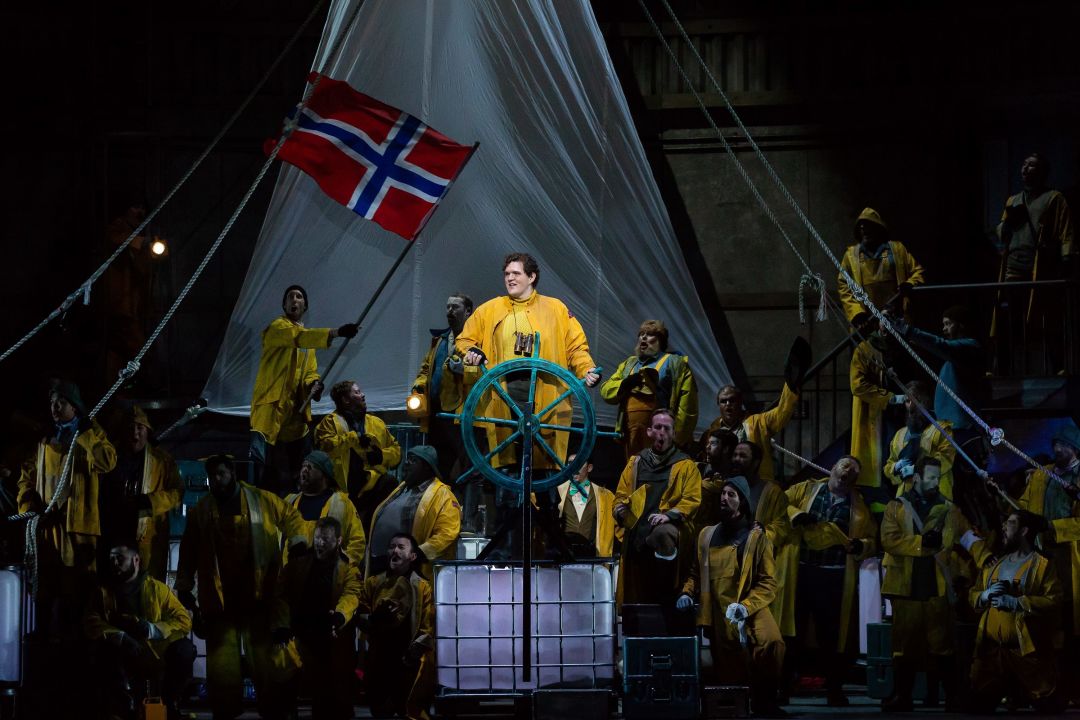Review: The Flying Dutchman Returns to the Wortham with 'Transcendent Purity'

Andrzej Dobber, Dutchman and Melody Moore, Senta
Image: Lynn Lane
What does a woman have to do these days to prove she’s telling the truth? In The Flying Dutchman, an opera that premiered in 1843, Richard Wagner’s answer is (spoiler alert here) to jump off a cliff.
It’s a special tragedy in Houston Grand Opera’s season opener (a co-production by HGO, Atlanta Opera, and Cincinnati Opera), because the magnificent American soprano Melody Moore sings the role of Senta, and from the very first note out of her lips, you’re not going to want to see her leave the stage ever. Her voice conveys a transcendent purity that should leave no question in anyone’s mind of her undying faithfulness.
Wagner’s shortest and most audience-friendly opera, The Flying Dutchman poses other questions to ponder, such as: How much treasure does it take for a father to offer his daughter in marriage to a cursed sailor who looks like Dan Crenshaw? The answer is a lot (it turns out when you’re damned to roaming the sea, you pick up quite a bit of gold). But after Senta sets eyes on The Dutchman, who stands akimbo for several minutes in a cloud of rolling fog wearing a red leather duster, black leather pants, and an eye-patch, you have to wonder if there’s no price a father can responsibly put on it.
Ethics aside, Icelandic bass Kristinn Sigmundsson delivers his fatherly duties as Daland with panache from the opera's opening with ardent timbre and exacting control. His voice, a velvet combination, is another you’ll want to hear more of. In the title role, Polish baritone Andrzej Dobber was less convincing and reliable—there were times when he sent phrases sailing off the stage commandingly, but more often he pulled the tempo back and struggled to project with full, resounding authority. As his competition for Senta’s heart, tenor Eric Cutler (in the role of Erik) purred through a stunning premonition of the dark-bearded, pale-faced apparition about to crash his romantic dreams. And making her HGO debut as Mary (Senta’s supervisor) with clarity and opulent color, contralto Leia Lensing makes a strong case for just sticking to your spinning.

Richard Trey Smagur (HGO Studio Artist), Steersman and Houston Grand Opera Chorus
Image: Lynn Lane
When HGO’s artistic and music director Patrick Summers took to the conductor’s podium, it sunk in that the year HGO survived in the makeshift Resilience Theater was happily over. Summers set the overture—a symphonic delight of swirling waves, joyful bursts, and the perils of hope—at a fine tempo, not too fast, but fast enough to inspire. But for many moments in the acts to follow, he fought to maintain that tempo against the singers, who slowed it down—more often Dobber, but he wasn’t all to blame. The male and female choruses, thanks to the fine direction of chorus master Richard Bado, remains a reliably excellent ensemble—boisterous in feeling, accurate in delivery, passionate to the hilt.
Visually, the best scene of this production is the very end, when the semi-circular factory wall separates at the top to reveal Senta and the Dutchman silhouetted in ice-blue light—a dramatic and welcomed consolation prize for Senta’s sacrifice. But the scene is striking only because of less dramatic decisions that come before. This production has moved the setting from craggy cliffs surrounding a cove off the Norwegian coast to a quasi-Industrial Revolution scene of punched out factory windows along cold walls (brought to half-life by set and costume designer Jacob A. Climer). Within this scene, a massive red handkerchief hangs slack from center stage to signal The Dutchman’s sea entrance and projections of his white-masked zombie sailors (by S. Katy Tucker) flicker unthreateningly against the curved wall.
When these zombies appear in the flesh wearing white ski masks, it’s unfortunate that director Tomer Zvulun allowed them to parade The Dutchman’s treasure chests while marching in an unimaginative circle. But the color palette—blues and grays offset by yellow, pink and, of course, red—is illuminated with remarkable skill by Amith Chandrashaker, whose intelligent handiwork makes the final scene the ultimate show-stopper here.
By the end, you might think it’s a lot to ask a woman to redeem the world through her faithfulness. For its grand return to the Wortham, HGO has a winner on its hands with Moore.
Thru Nov. 2. Tickets from $25. Wortham Center, 501 Texas Ave. 713-228-6737. More info and tickets at houstongrandopera.org.




